
|

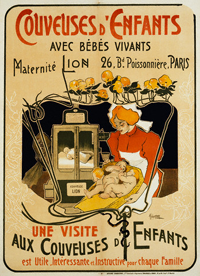 Cultural artifacts or artefacts within nursing are human-made objects that reflect both professional and workplace characteristics such as values, norms, myths, sagas, symbols, rituals, ceremonies: this includes the use and placement of objects within nursing practice. In the context of this analysis, artifact refers to the notion that technology of all kinds, including the contemporary inclusion of information technologies in nursing is an inherent, almost seamless cultural phenomenon, one that is long-standing and can be taken for granted as part of nursing evolution. Cultural artifacts or artefacts within nursing are human-made objects that reflect both professional and workplace characteristics such as values, norms, myths, sagas, symbols, rituals, ceremonies: this includes the use and placement of objects within nursing practice. In the context of this analysis, artifact refers to the notion that technology of all kinds, including the contemporary inclusion of information technologies in nursing is an inherent, almost seamless cultural phenomenon, one that is long-standing and can be taken for granted as part of nursing evolution.
An Intricate Dance
Margarete Sandelowski (2000) presented a comprehensive examination of how nursing and technology have been consistently linked since the advent of the bureaucratic health care system beginning in the early 19th century. Perhaps unwittingly, nurses served as a critical force that supported the scientific 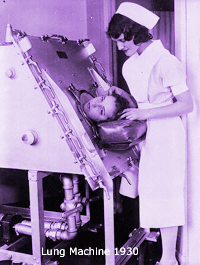 and technological development of the health care system that exists today. It was the lure of modern equipment and eventually machinery, the presence of attentive and efficient nurses, and the aseptic, medical domain embodied in hospitals that shifted health care away from the home to the institution. “The hospital became the carefully established space where rituals and ceremonies were performed that centered upon the conspicuous display of new tools and equipment. Nurses made hospitals hospitable to both patients and the new machinery of care housed there” (2000, p. 1). In fact, Sandelowski purports that it was nurses who made the use of technology in health care acceptable to the public. They did this by “...educating patients about new devices, getting patients to accept and comply with their use, and alleviating patients' fears about them” (p.2). Indeed, it was the combination of technology and nurses that lured people to go to hospitals when they became sick, placing them in the center of medical care. “The link was thus created early in this century between sympathetic care embodied in the female nurse and scientific care, embodied in medical and hospital technology.” (Sandelowski, 1999, p. 199). and technological development of the health care system that exists today. It was the lure of modern equipment and eventually machinery, the presence of attentive and efficient nurses, and the aseptic, medical domain embodied in hospitals that shifted health care away from the home to the institution. “The hospital became the carefully established space where rituals and ceremonies were performed that centered upon the conspicuous display of new tools and equipment. Nurses made hospitals hospitable to both patients and the new machinery of care housed there” (2000, p. 1). In fact, Sandelowski purports that it was nurses who made the use of technology in health care acceptable to the public. They did this by “...educating patients about new devices, getting patients to accept and comply with their use, and alleviating patients' fears about them” (p.2). Indeed, it was the combination of technology and nurses that lured people to go to hospitals when they became sick, placing them in the center of medical care. “The link was thus created early in this century between sympathetic care embodied in the female nurse and scientific care, embodied in medical and hospital technology.” (Sandelowski, 1999, p. 199).
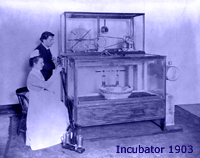 This premise served the evolution of the medical profession well. In fact, as Sandelowski points out, “...for most of the history of nursing, nurses (as women) and technology (in the form of material devices, such as x-ray machines, techniques, such as surgery and organizational systems, such as hospitals and specialized units of care) have been represented as embodied extensions of physicians and as servants both to physicians and to the general public in the fight against disease” (1999, p. 199).
In the early 20th century, hospital nursing was shaped as medical technology through the provision of manual labour and compliantly following doctors' orders, while physicians controlled the arena of care This premise served the evolution of the medical profession well. In fact, as Sandelowski points out, “...for most of the history of nursing, nurses (as women) and technology (in the form of material devices, such as x-ray machines, techniques, such as surgery and organizational systems, such as hospitals and specialized units of care) have been represented as embodied extensions of physicians and as servants both to physicians and to the general public in the fight against disease” (1999, p. 199).
In the early 20th century, hospital nursing was shaped as medical technology through the provision of manual labour and compliantly following doctors' orders, while physicians controlled the arena of care 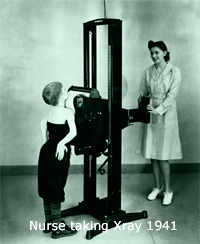 through their mental labour expenditures, crystallized into diagnoses and treatments. The fact that nurses were both capable and eager to apply technologies in the care of patients served the mandate of medicine well, since physicians were perceived as responsible for any healing or recovery. The nurses as almost invisible workers often shaped the technologies to work more effectively, or less obtrusively yet rarely were credited for doing so. “Physicians thought of nurses much like stethoscopes and surgical instruments, as physical or bodily extensions of physicians” (Sandelowski, 2000, p. 3). through their mental labour expenditures, crystallized into diagnoses and treatments. The fact that nurses were both capable and eager to apply technologies in the care of patients served the mandate of medicine well, since physicians were perceived as responsible for any healing or recovery. The nurses as almost invisible workers often shaped the technologies to work more effectively, or less obtrusively yet rarely were credited for doing so. “Physicians thought of nurses much like stethoscopes and surgical instruments, as physical or bodily extensions of physicians” (Sandelowski, 2000, p. 3).
As early as the 1930's nurses began to question this premise, and recognized that technology could potentially threaten the very essence of nursing, an essence that remained elusive and unnamed. Yet, nurses of the time also recognize that technology could also support and even boost the scientific foundations of the nursing field as it struggled to begin the long process of becoming recognized as a 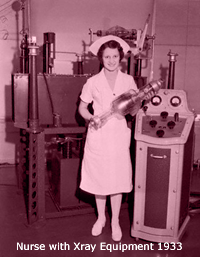 legitimate discipline in its own right. Thus, technology has remained a key artifact of nursing culture. “Although nurses continue to liken themselves and their work to technology to make their work visible and to advance their social positions, the metaphoric link between nurses/nursing and technology is troubling for nurses for several reasons. It reinforces the idea that nursing is nothing more than manual labor and the mindless application of medical science on orders from physicians” (Sandelowski, 1999, p. 201). It also reinforces that evolving technology has consistently been interwoven with the nursing profession in an intricate dance of ritual, ceremony, and cultural symbol. From the first thermometers, stethoscopes and physiological monitors, technologies have semiotically symbolized the nursing profession in both a social and cultural way. Now, in the 21st century, advanced information technologies as well as reproductive, medical, surgical, life-sustaining, and diagnostic technologies legitimate discipline in its own right. Thus, technology has remained a key artifact of nursing culture. “Although nurses continue to liken themselves and their work to technology to make their work visible and to advance their social positions, the metaphoric link between nurses/nursing and technology is troubling for nurses for several reasons. It reinforces the idea that nursing is nothing more than manual labor and the mindless application of medical science on orders from physicians” (Sandelowski, 1999, p. 201). It also reinforces that evolving technology has consistently been interwoven with the nursing profession in an intricate dance of ritual, ceremony, and cultural symbol. From the first thermometers, stethoscopes and physiological monitors, technologies have semiotically symbolized the nursing profession in both a social and cultural way. Now, in the 21st century, advanced information technologies as well as reproductive, medical, surgical, life-sustaining, and diagnostic technologies 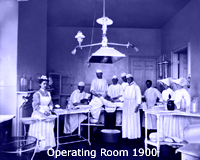 make up the day-to-day artifacts of the everyday hospital milieu. A nursing shift sans the utilization of some form of technology would be a very rare event in the hospital setting of today. “Technology, largely in its modes of manifestations as physical object and way of doing, has been integral to and has fundamentally (re) shaped nursing practice” (Sandelowski, 1999, p. 198). make up the day-to-day artifacts of the everyday hospital milieu. A nursing shift sans the utilization of some form of technology would be a very rare event in the hospital setting of today. “Technology, largely in its modes of manifestations as physical object and way of doing, has been integral to and has fundamentally (re) shaped nursing practice” (Sandelowski, 1999, p. 198).
Activity and Mediation
Technologies, from simple to complex, have served as long standing artifacts within nursing culture, along with other tools, documentations, physical and organizational structures, and more recently, information systems. Technology in the form of computers and software has been shaped to improve and enhance human cognition, facilitate collaboration and communication, and support task performance. “Artefacts are thus considered to be the crucial element that binds user cognition, information processing, workload management, and task accomplishment” (Ramduny-Ellis, Dix, Rayson, Onditi, Sommerville & Ransom, 2005, p. 80). Technologies of all kinds have been applied in nursing to support, prompt and drive activity within the boundaries of health care. In fact, an adaptation of Vgotsky's mediational model triangle (1978) can be applied to convey a convincing representation of the artifact of technology in the cultural context of nursing.
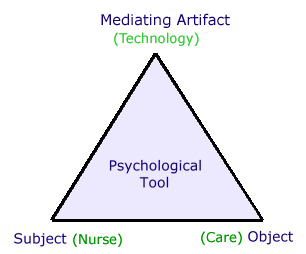
Figure 3: Vygotsky's Mediational Model Triangle
The subject (nurse) interacts cognitively and behaviourally (activity) with the mediating artifact (technology) motivated by the achievement of the objective or object: in this case, the provision of  nursing care to clients. This activity is coupled with conscious psychological tools which support the application and evolution of nursing practice. Psychological tools are artifacts located in a socio-historical context that form an integral part of human action - in this case, the cognitive and cultural aspects in the provision of nursing care or the experiencing of nursing care within the health care context. For Vygotsky (1981), mediation with tools provided a medium to connect the external and the internal, the social and the individual. In sociocultural theory, individuals and artifacts are comprehended as aggregates embedded within sociocultural activities. Artifacts are thus understood as extensions of the individual. Nurses develop their tools (nursing care) by applying artifacts at the same
time as these tools influence the community in which they are used (the health care system). According to Leontiev (1978) this occurs as a dynamic evolving relationship, as activity between subject, artifact, and object. The artifacts in question also represent (and helped to make visible) the crystallized knowledge of nursing and medicine (Bannon and Bodker, 1991). nursing care to clients. This activity is coupled with conscious psychological tools which support the application and evolution of nursing practice. Psychological tools are artifacts located in a socio-historical context that form an integral part of human action - in this case, the cognitive and cultural aspects in the provision of nursing care or the experiencing of nursing care within the health care context. For Vygotsky (1981), mediation with tools provided a medium to connect the external and the internal, the social and the individual. In sociocultural theory, individuals and artifacts are comprehended as aggregates embedded within sociocultural activities. Artifacts are thus understood as extensions of the individual. Nurses develop their tools (nursing care) by applying artifacts at the same
time as these tools influence the community in which they are used (the health care system). According to Leontiev (1978) this occurs as a dynamic evolving relationship, as activity between subject, artifact, and object. The artifacts in question also represent (and helped to make visible) the crystallized knowledge of nursing and medicine (Bannon and Bodker, 1991).
Diversity and Embeddedness
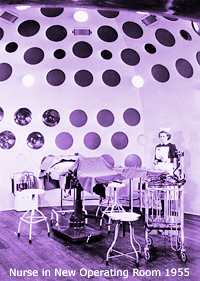 The notion of technology, and ultimately informatics as an artifact of nursing might seem far-fetched, but it is an idea that is reflected in diverse ways in the literature. Some literature reflects semiotics as in the case of Sandelowski (1999) who viewed technology as a sign and symbol and ultimately as a cultural artifact of nursing. Others applied cognitive science, especially when looking at how people pursue activity in the workplace. “To what degree does a system embody appropriate models of work routines, management assumptions, patient care philosophies, and users conceptions of their needs? A system is never only a system, but contains cognitive models of how people work and think”(Kaplan, 2001, p. 45). Sociocultural historical notions reflected through classical activity theory by Vygotsky (1978) and later Leontiev (1978) focused on how humans interact with various physical and psychological artifacts to act upon an object within action landscapes such as health care facilities. “Health care informatics should be understood as an ecology of tasks and artifacts. Knowledge is situated in particular social and physical systems and emerges in the context of interactions with other people and the environment” (Kaplan, 2001, p. 46). The notion of technology, and ultimately informatics as an artifact of nursing might seem far-fetched, but it is an idea that is reflected in diverse ways in the literature. Some literature reflects semiotics as in the case of Sandelowski (1999) who viewed technology as a sign and symbol and ultimately as a cultural artifact of nursing. Others applied cognitive science, especially when looking at how people pursue activity in the workplace. “To what degree does a system embody appropriate models of work routines, management assumptions, patient care philosophies, and users conceptions of their needs? A system is never only a system, but contains cognitive models of how people work and think”(Kaplan, 2001, p. 45). Sociocultural historical notions reflected through classical activity theory by Vygotsky (1978) and later Leontiev (1978) focused on how humans interact with various physical and psychological artifacts to act upon an object within action landscapes such as health care facilities. “Health care informatics should be understood as an ecology of tasks and artifacts. Knowledge is situated in particular social and physical systems and emerges in the context of interactions with other people and the environment” (Kaplan, 2001, p. 46).
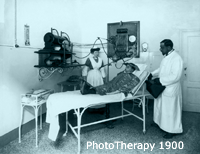 Technology has become such an embedded artifact in nursing that often the current nursing literature reflects computers and other technological equipment as mere tools, as benign objects that nurses utilize and control. “It (health-medical informatics) has been characterized as a “design discipline” similar to architecture, concerned with the design and implementation of artifacts that enable the promotion and delivery of a defined purpose, in our case health and health care. Health informatics is also a practical science in that it aims to achieve changes in the state of reality, as much as developing insights into the structure and function of reality, as is the case in theoretical sciences.” (Moehr & Grant, 2000, p. 276). Technology has become such an embedded artifact in nursing that often the current nursing literature reflects computers and other technological equipment as mere tools, as benign objects that nurses utilize and control. “It (health-medical informatics) has been characterized as a “design discipline” similar to architecture, concerned with the design and implementation of artifacts that enable the promotion and delivery of a defined purpose, in our case health and health care. Health informatics is also a practical science in that it aims to achieve changes in the state of reality, as much as developing insights into the structure and function of reality, as is the case in theoretical sciences.” (Moehr & Grant, 2000, p. 276).
|
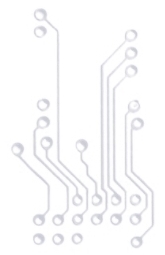
|




 Cultural artifacts or artefacts within nursing are human-made objects that reflect both professional and workplace characteristics such as values, norms, myths, sagas, symbols, rituals, ceremonies: this includes the use and placement of objects within nursing practice. In the context of this analysis, artifact refers to the notion that technology of all kinds, including the contemporary inclusion of information technologies in nursing is an inherent, almost seamless cultural phenomenon, one that is long-standing and can be taken for granted as part of nursing evolution.
Cultural artifacts or artefacts within nursing are human-made objects that reflect both professional and workplace characteristics such as values, norms, myths, sagas, symbols, rituals, ceremonies: this includes the use and placement of objects within nursing practice. In the context of this analysis, artifact refers to the notion that technology of all kinds, including the contemporary inclusion of information technologies in nursing is an inherent, almost seamless cultural phenomenon, one that is long-standing and can be taken for granted as part of nursing evolution.
 and technological development of the health care system that exists today. It was the lure of modern equipment and eventually machinery, the presence of attentive and efficient nurses, and the aseptic, medical domain embodied in hospitals that shifted health care away from the home to the institution. “The hospital became the carefully established space where rituals and ceremonies were performed that centered upon the conspicuous display of new tools and equipment. Nurses made hospitals hospitable to both patients and the new machinery of care housed there” (2000, p. 1). In fact, Sandelowski purports that it was nurses who made the use of technology in health care acceptable to the public. They did this by “...educating patients about new devices, getting patients to accept and comply with their use, and alleviating patients' fears about them” (p.2). Indeed, it was the combination of technology and nurses that lured people to go to hospitals when they became sick, placing them in the center of medical care. “The link was thus created early in this century between sympathetic care embodied in the female nurse and scientific care, embodied in medical and hospital technology.” (Sandelowski, 1999, p. 199).
and technological development of the health care system that exists today. It was the lure of modern equipment and eventually machinery, the presence of attentive and efficient nurses, and the aseptic, medical domain embodied in hospitals that shifted health care away from the home to the institution. “The hospital became the carefully established space where rituals and ceremonies were performed that centered upon the conspicuous display of new tools and equipment. Nurses made hospitals hospitable to both patients and the new machinery of care housed there” (2000, p. 1). In fact, Sandelowski purports that it was nurses who made the use of technology in health care acceptable to the public. They did this by “...educating patients about new devices, getting patients to accept and comply with their use, and alleviating patients' fears about them” (p.2). Indeed, it was the combination of technology and nurses that lured people to go to hospitals when they became sick, placing them in the center of medical care. “The link was thus created early in this century between sympathetic care embodied in the female nurse and scientific care, embodied in medical and hospital technology.” (Sandelowski, 1999, p. 199).  This premise served the evolution of the medical profession well. In fact, as Sandelowski points out, “...for most of the history of nursing, nurses (as women) and technology (in the form of material devices, such as x-ray machines, techniques, such as surgery and organizational systems, such as hospitals and specialized units of care) have been represented as embodied extensions of physicians and as servants both to physicians and to the general public in the fight against disease” (1999, p. 199).
In the early 20th century, hospital nursing was shaped as medical technology through the provision of manual labour and compliantly following doctors' orders, while physicians controlled the arena of care
This premise served the evolution of the medical profession well. In fact, as Sandelowski points out, “...for most of the history of nursing, nurses (as women) and technology (in the form of material devices, such as x-ray machines, techniques, such as surgery and organizational systems, such as hospitals and specialized units of care) have been represented as embodied extensions of physicians and as servants both to physicians and to the general public in the fight against disease” (1999, p. 199).
In the early 20th century, hospital nursing was shaped as medical technology through the provision of manual labour and compliantly following doctors' orders, while physicians controlled the arena of care  through their mental labour expenditures, crystallized into diagnoses and treatments. The fact that nurses were both capable and eager to apply technologies in the care of patients served the mandate of medicine well, since physicians were perceived as responsible for any healing or recovery. The nurses as almost invisible workers often shaped the technologies to work more effectively, or less obtrusively yet rarely were credited for doing so. “Physicians thought of nurses much like stethoscopes and surgical instruments, as physical or bodily extensions of physicians” (Sandelowski, 2000, p. 3).
through their mental labour expenditures, crystallized into diagnoses and treatments. The fact that nurses were both capable and eager to apply technologies in the care of patients served the mandate of medicine well, since physicians were perceived as responsible for any healing or recovery. The nurses as almost invisible workers often shaped the technologies to work more effectively, or less obtrusively yet rarely were credited for doing so. “Physicians thought of nurses much like stethoscopes and surgical instruments, as physical or bodily extensions of physicians” (Sandelowski, 2000, p. 3).  legitimate discipline in its own right. Thus, technology has remained a key artifact of nursing culture. “Although nurses continue to liken themselves and their work to technology to make their work visible and to advance their social positions, the metaphoric link between nurses/nursing and technology is troubling for nurses for several reasons. It reinforces the idea that nursing is nothing more than manual labor and the mindless application of medical science on orders from physicians” (Sandelowski, 1999, p. 201). It also reinforces that evolving technology has consistently been interwoven with the nursing profession in an intricate dance of ritual, ceremony, and cultural symbol. From the first thermometers, stethoscopes and physiological monitors, technologies have semiotically symbolized the nursing profession in both a social and cultural way. Now, in the 21st century, advanced information technologies as well as reproductive, medical, surgical, life-sustaining, and diagnostic technologies
legitimate discipline in its own right. Thus, technology has remained a key artifact of nursing culture. “Although nurses continue to liken themselves and their work to technology to make their work visible and to advance their social positions, the metaphoric link between nurses/nursing and technology is troubling for nurses for several reasons. It reinforces the idea that nursing is nothing more than manual labor and the mindless application of medical science on orders from physicians” (Sandelowski, 1999, p. 201). It also reinforces that evolving technology has consistently been interwoven with the nursing profession in an intricate dance of ritual, ceremony, and cultural symbol. From the first thermometers, stethoscopes and physiological monitors, technologies have semiotically symbolized the nursing profession in both a social and cultural way. Now, in the 21st century, advanced information technologies as well as reproductive, medical, surgical, life-sustaining, and diagnostic technologies  make up the day-to-day artifacts of the everyday hospital milieu. A nursing shift sans the utilization of some form of technology would be a very rare event in the hospital setting of today. “Technology, largely in its modes of manifestations as physical object and way of doing, has been integral to and has fundamentally (re) shaped nursing practice” (Sandelowski, 1999, p. 198).
make up the day-to-day artifacts of the everyday hospital milieu. A nursing shift sans the utilization of some form of technology would be a very rare event in the hospital setting of today. “Technology, largely in its modes of manifestations as physical object and way of doing, has been integral to and has fundamentally (re) shaped nursing practice” (Sandelowski, 1999, p. 198).

 nursing care to clients. This activity is coupled with conscious psychological tools which support the application and evolution of nursing practice. Psychological tools are artifacts located in a socio-historical context that form an integral part of human action - in this case, the cognitive and cultural aspects in the provision of nursing care or the experiencing of nursing care within the health care context. For Vygotsky (1981), mediation with tools provided a medium to connect the external and the internal, the social and the individual. In sociocultural theory, individuals and artifacts are comprehended as aggregates embedded within sociocultural activities. Artifacts are thus understood as extensions of the individual. Nurses develop their tools (nursing care) by applying artifacts at the same
time as these tools influence the community in which they are used (the health care system). According to Leontiev (1978) this occurs as a dynamic evolving relationship, as activity between subject, artifact, and object. The artifacts in question also represent (and helped to make visible) the crystallized knowledge of nursing and medicine (Bannon and Bodker, 1991).
nursing care to clients. This activity is coupled with conscious psychological tools which support the application and evolution of nursing practice. Psychological tools are artifacts located in a socio-historical context that form an integral part of human action - in this case, the cognitive and cultural aspects in the provision of nursing care or the experiencing of nursing care within the health care context. For Vygotsky (1981), mediation with tools provided a medium to connect the external and the internal, the social and the individual. In sociocultural theory, individuals and artifacts are comprehended as aggregates embedded within sociocultural activities. Artifacts are thus understood as extensions of the individual. Nurses develop their tools (nursing care) by applying artifacts at the same
time as these tools influence the community in which they are used (the health care system). According to Leontiev (1978) this occurs as a dynamic evolving relationship, as activity between subject, artifact, and object. The artifacts in question also represent (and helped to make visible) the crystallized knowledge of nursing and medicine (Bannon and Bodker, 1991).
 The notion of technology, and ultimately informatics as an artifact of nursing might seem far-fetched, but it is an idea that is reflected in diverse ways in the literature. Some literature reflects semiotics as in the case of Sandelowski (1999) who viewed technology as a sign and symbol and ultimately as a cultural artifact of nursing. Others applied cognitive science, especially when looking at how people pursue activity in the workplace. “To what degree does a system embody appropriate models of work routines, management assumptions, patient care philosophies, and users conceptions of their needs? A system is never only a system, but contains cognitive models of how people work and think”(Kaplan, 2001, p. 45). Sociocultural historical notions reflected through classical activity theory by Vygotsky (1978) and later Leontiev (1978) focused on how humans interact with various physical and psychological artifacts to act upon an object within action landscapes such as health care facilities. “Health care informatics should be understood as an ecology of tasks and artifacts. Knowledge is situated in particular social and physical systems and emerges in the context of interactions with other people and the environment” (Kaplan, 2001, p. 46).
The notion of technology, and ultimately informatics as an artifact of nursing might seem far-fetched, but it is an idea that is reflected in diverse ways in the literature. Some literature reflects semiotics as in the case of Sandelowski (1999) who viewed technology as a sign and symbol and ultimately as a cultural artifact of nursing. Others applied cognitive science, especially when looking at how people pursue activity in the workplace. “To what degree does a system embody appropriate models of work routines, management assumptions, patient care philosophies, and users conceptions of their needs? A system is never only a system, but contains cognitive models of how people work and think”(Kaplan, 2001, p. 45). Sociocultural historical notions reflected through classical activity theory by Vygotsky (1978) and later Leontiev (1978) focused on how humans interact with various physical and psychological artifacts to act upon an object within action landscapes such as health care facilities. “Health care informatics should be understood as an ecology of tasks and artifacts. Knowledge is situated in particular social and physical systems and emerges in the context of interactions with other people and the environment” (Kaplan, 2001, p. 46).  Technology has become such an embedded artifact in nursing that often the current nursing literature reflects computers and other technological equipment as mere tools, as benign objects that nurses utilize and control. “It (health-medical informatics) has been characterized as a “design discipline” similar to architecture, concerned with the design and implementation of artifacts that enable the promotion and delivery of a defined purpose, in our case health and health care. Health informatics is also a practical science in that it aims to achieve changes in the state of reality, as much as developing insights into the structure and function of reality, as is the case in theoretical sciences.” (Moehr & Grant, 2000, p. 276).
Technology has become such an embedded artifact in nursing that often the current nursing literature reflects computers and other technological equipment as mere tools, as benign objects that nurses utilize and control. “It (health-medical informatics) has been characterized as a “design discipline” similar to architecture, concerned with the design and implementation of artifacts that enable the promotion and delivery of a defined purpose, in our case health and health care. Health informatics is also a practical science in that it aims to achieve changes in the state of reality, as much as developing insights into the structure and function of reality, as is the case in theoretical sciences.” (Moehr & Grant, 2000, p. 276).